Netac Z5 USB 3.1 Gen 2 Portable SSD Review
by Ganesh T S on August 9, 2016 8:00 AM ESTDirect-Attached Storage Benchmarks
Netac claims read and write speeds of 747 MBps and 723 MBps respectively, and these are backed up by the ATTO benchmarks provided below. Unfortunately, these access traces are not very common in real-life scenarios.
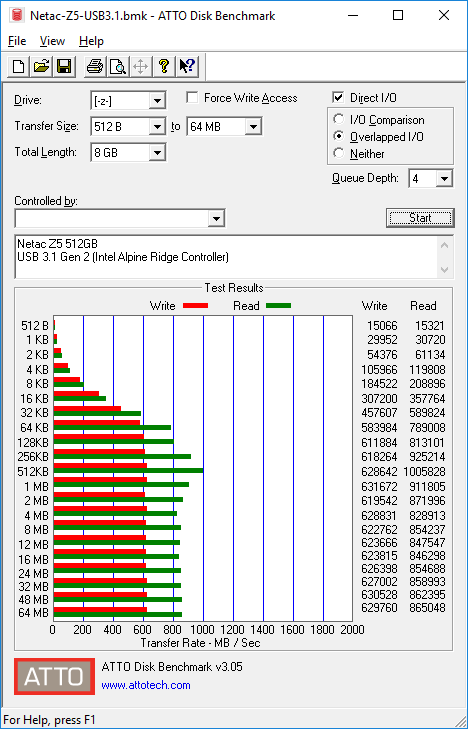
CrystalDiskMark, despite being a canned benchmark, provides a better estimate of the performance range with a selected set of numbers. As evident from the screenshot below, the performance can dip to as low as 19 MBps for random 4K reads.
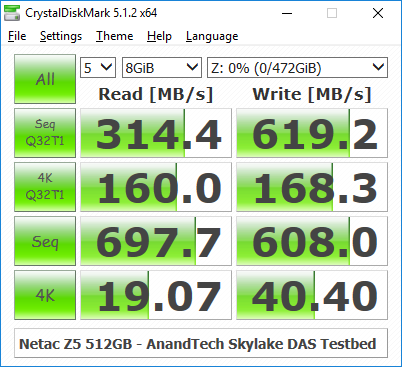
Benchmarks - robocopy and PCMark 8 Storage Bench
Our testing methodology for DAS units also takes into consideration the usual use-case for such devices. The most common usage scenario is transfer of large amounts of photos and videos to and from the unit. The minor usage scenario is importing files directly off the DAS into a multimedia editing program such as Adobe Photoshop.
In order to tackle the first use-case, we created three test folders with the following characteristics:
- Photos: 15.6 GB collection of 4320 photos (RAW as well as JPEGs) in 61 sub-folders
- Videos: 16.1 GB collection of 244 videos (MP4 as well as MOVs) in 6 sub-folders
- BR: 10.7 GB Blu-ray folder structure of the IDT Benchmark Blu-ray (the same that we use in our robocopy tests for NAS systems)
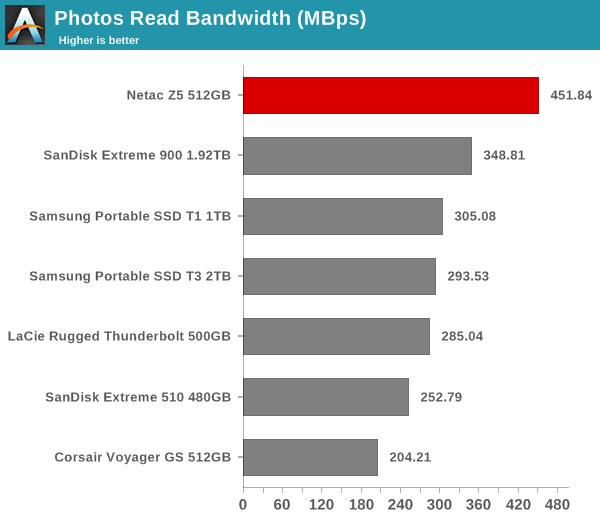


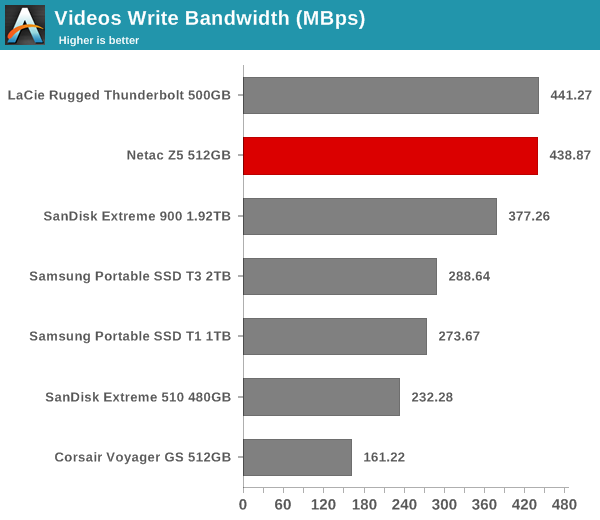
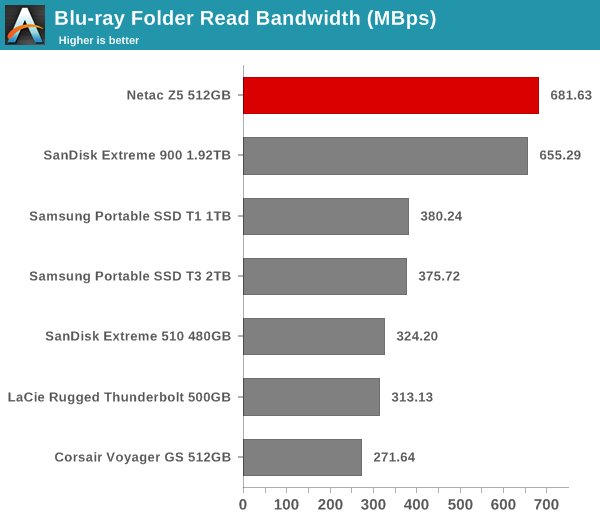

For the second use-case, we take advantage of PC Mark 8's storage bench. The storage workload involves games as well as multimedia editing applications. The command line version allows us to cherry-pick storage traces to run on a target drive. We chose the following traces.
- Adobe Photoshop (Light)
- Adobe Photoshop (Heavy)
- Adobe After Effects
- Adobe Illustrator
Usually, PC Mark 8 reports time to complete the trace, but the detailed log report has the read and write bandwidth figures which we present in our performance graphs. Note that the bandwidth number reported in the results don't involve idle time compression. Results might appear low, but that is part of the workload characteristic. Note that the same testbed is being used for all DAS units. Therefore, comparing the numbers for each trace should be possible across different DAS units.
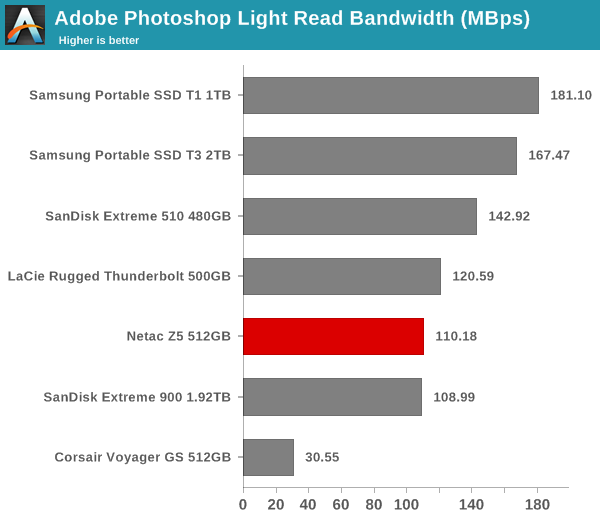

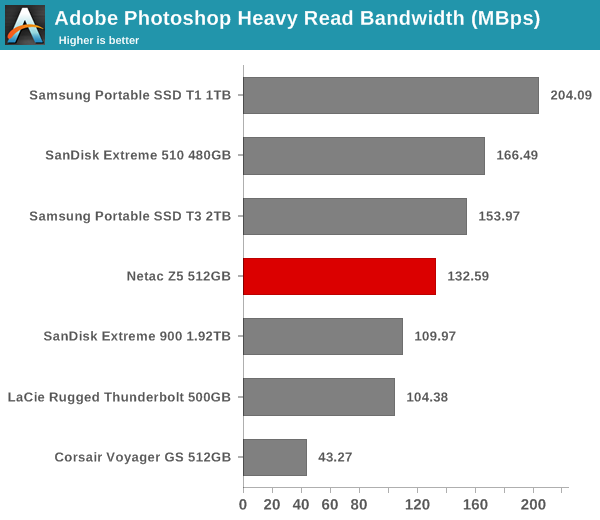
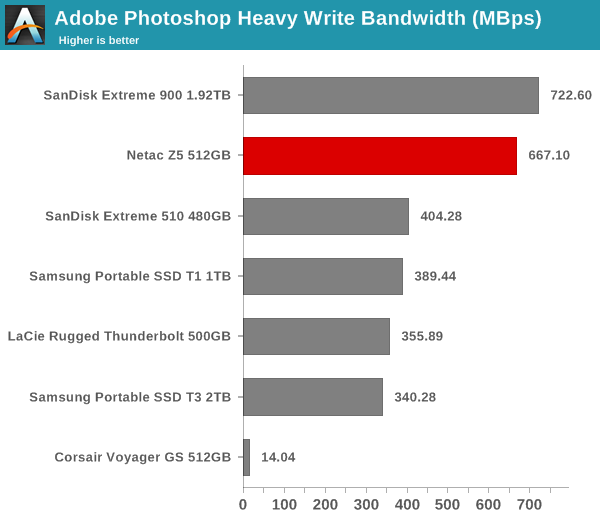
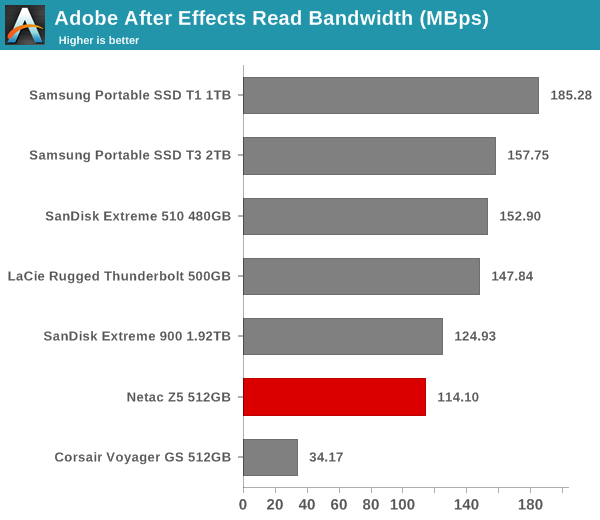
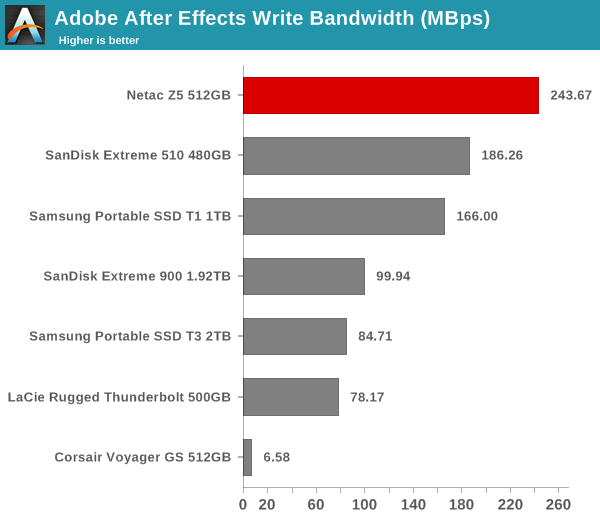
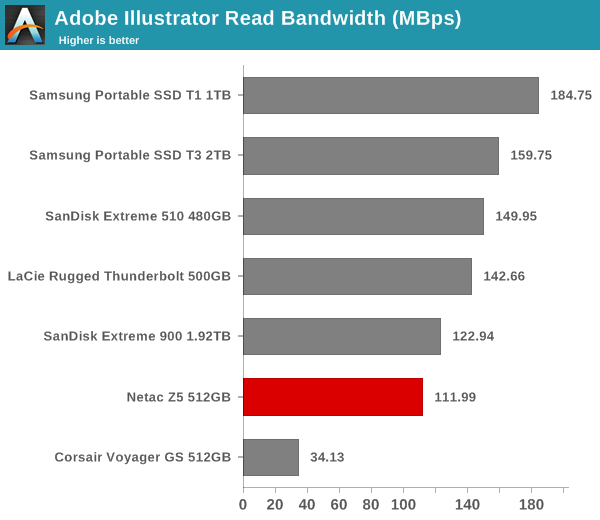
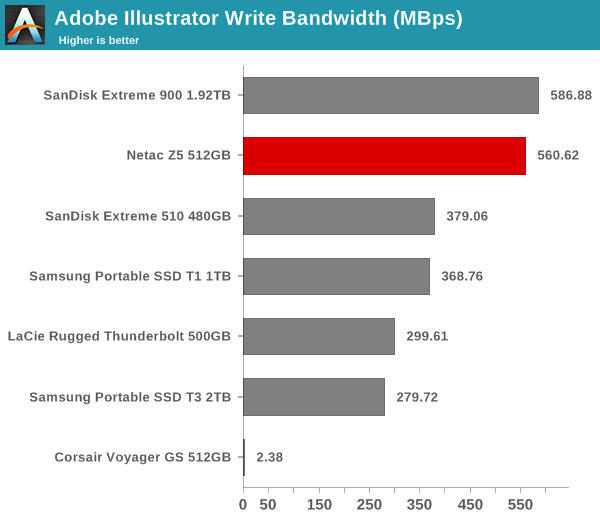
The Netac Z5 512GB unit manages to be in the top two in almost all of the test traces. There are certain workloads that are unable to take advantage of two SSDs in RAID-0, and in those, we can see that the Netac Z5 performs similar to the SanDisk Extreme 900 (which also has a similar RAID-0 configuration). In any case, our direct-attached storage benchmarks show that the Netac Z5 is an excellent performer when it comes to real-world use-cases.










22 Comments
View All Comments
Chaitanya - Tuesday, August 9, 2016 - link
Those seq. writes are nothing special.ganeshts - Tuesday, August 9, 2016 - link
With the right system and drivers, you can hit upwards of 600 MBps for real-world workloads. At this price point, I don't think there is a better performer. The SanDisk Extreme 900 also performs similarly.Flunk - Tuesday, August 9, 2016 - link
At about $228, it's forgivable.osxandwindows - Tuesday, August 9, 2016 - link
Thats the same performance of a thunderbolt 1 ssd.R0H1T - Tuesday, August 9, 2016 - link
This thing's hot, quite literally, & not in a good way.WorldWithoutMadness - Tuesday, August 9, 2016 - link
and sooner or later we'll confront data loss because of bga solder fatigueganeshts - Tuesday, August 9, 2016 - link
No doubt the unit could do with better thermal design, but, transferring upwards of 250GB of data within a short time duration (that causes temperature of the metal case to reach 46C) is, I would imagine, not a frequent use-case.Netac is already aware of the need for a better thermal solution.
cygnus1 - Tuesday, August 9, 2016 - link
Yeah, I think if they just added a thermal pad that would let the heat transfer away to the case from the pertinent chops quicker than through the PCB and open air to the case would go a long way in keeping the device cooler overall.kaidenshi - Tuesday, August 9, 2016 - link
I did that with a 2.5" external spinning HDD that was getting too hot; put a thermal pad between its base and the metal USB 3.0 case. That kept it about 15C cooler than the cloth pad(!) they had glued in there, and kept vibrations down as well.Samus - Tuesday, August 9, 2016 - link
A common misconception with mSATA SSD's is their thermal profile.They run incredibly hot. My Samsung 840 mSATA SSD idles at 47 degrees C with a load temp in the low 60's.
It's been this way for years and hasn't failed. Samsung, Lite On and Micron all rate their OEM SSD's at a working temp of 0-75C. Yes, 75 Celsius is actually within design specifications!
A lot of it has to do with the PCB. The shape of the mSATA SSD, in addition to it operating at a higher voltage than m2, create a less efficient therma design. But that doesn't make it unreliable, just unusual as far as why we consider the 'norm' for storage temperatures which have historically considered 30-40C to be ideal.
But interestingly even Backblaze has shown in their reliability survey (which I have always found unrealistic because it only considers cold storage applications) that 'high' hard disk temperatures have little correlation to reliability even when approaching 50C. In fact it is low temperatures, below 30C, that have a connection to disk failure. Not unreasonable evidence when you think about the thermal dynamics of spinning metal disks; metals wears less at higher temperatures...bearings, motors, etc.
I understand SSD's are entirely different physics and there is no ideal operating temperature, or rather it is a significantly wider range, but really the only temperature concern with NAND is during cold storage where 20-25C is substantially more ideal than above 30C.